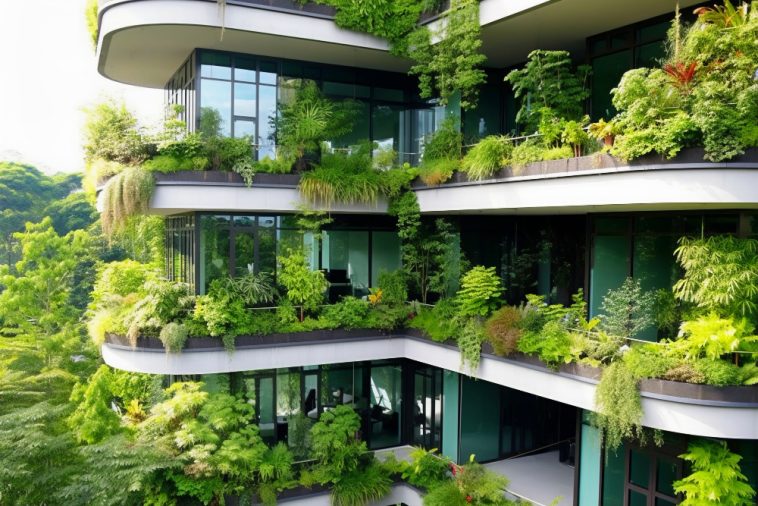Introduction
Reducing energy consumption in the home is not only beneficial for the environment, but it can also lead to significant cost savings for homeowners. By implementing sustainable practices and utilizing energy-efficient technologies, individuals can lower their carbon footprint and contribute to a greener, more sustainable future. In this article, we will explore various tips and techniques to help you reduce energy consumption in your home, ultimately leading to a lower carbon footprint.
Eco-friendly Home
Creating an eco-friendly home is the first step towards reducing energy consumption and lowering your carbon footprint. Consider the following tips:
- Insulate your home properly: Ensuring that your home is well-insulated can help minimize heat loss in the winter and reduce the need for excessive heating.
- Use energy-efficient windows: Installing double-glazed windows can enhance insulation and prevent heat transfer.
- Choose energy-efficient appliances: When purchasing new appliances, look for the Energy Star label, which indicates that the appliance meets strict energy efficiency standards.
- Optimize natural lighting: Utilize natural light as much as possible during the day to reduce the need for artificial lighting.
Energy-saving Techniques
Implementing energy-saving techniques in your daily routines can significantly reduce energy consumption. Consider the following:
- Switch to LED lighting: LED bulbs use significantly less energy compared to traditional incandescent bulbs and have a much longer lifespan.
- Unplug electronics when not in use: Even when turned off, electronics consume standby power. Unplug devices or use power strips with on/off switches to completely cut off power.
- Utilize power-saving features: Activate power-saving modes on electronic devices such as computers, televisions, and game consoles.
- Dry clothes efficiently: Opt for air-drying clothes instead of using the dryer whenever possible, or use the dryer’s energy-saving settings.
Renewable Energy Solutions
Exploring renewable energy solutions is an excellent way to reduce reliance on fossil fuels and lower your carbon footprint. Consider the following options:
- Solar panels: Install solar panels on your roof to generate clean, renewable energy for your home.
- Wind turbines: If you have sufficient space and live in an area with consistent wind, consider installing a small wind turbine to generate electricity.
- Geothermal heating and cooling: Utilize geothermal systems to tap into the earth’s natural heat and cool your home more efficiently.
Green Living Tips
Adopting green living practices can have a positive impact on your energy consumption and carbon footprint. Consider the following tips:
- Reduce water consumption: Install water-saving fixtures and appliances, fix leaks promptly, and practice water-efficient habits.
- Practice composting: Composting food waste can reduce landfill waste and provide nutrient-rich soil for your garden.
- Plant trees and gardens: Trees provide natural shade, reducing the need for excessive air conditioning, while gardens can contribute to a more sustainable food system.
- Use eco-friendly cleaning products: Opt for cleaning products that are free from harmful chemicals and have minimal environmental impact.
Energy-efficient Home
Designing and maintaining an energy-efficient home is crucial in reducing energy consumption and lowering your carbon footprint. Consider the following strategies:
- Proper home orientation: Position your home to maximize natural light and take advantage of passive heating and cooling.
- Smart thermostats: Install programmable thermostats that can automatically adjust temperature settings to optimize energy usage.
- Energy-efficient HVAC systems: Upgrade to high-efficiency heating, ventilation, and air conditioning (HVAC) systems to reduce energy consumption.
- Energy-efficient insulation: Ensure that your walls, attic, and floors have proper insulation to prevent heat transfer.
Energy Conservation Methods
Implementing energy conservation methods can significantly reduce energy consumption and promote a more sustainable lifestyle. Consider the following:
- Carpooling and public transportation: Opt for carpooling or public transportation whenever possible to reduce fuel consumption and emissions.
- Turn off lights when not in use: Develop the habit of switching off lights in empty rooms to conserve energy.
- Reduce air conditioning usage: Use fans or natural ventilation to cool your home instead of relying solely on air conditioning.
- Limit hot water usage: Take shorter showers, insulate your water heater, and use cold water for laundry when possible.
Sustainable Lifestyle
Adopting a sustainable lifestyle goes beyond just reducing energy consumption; it encompasses various environmentally conscious practices. Consider the following:
- Reduce, reuse, recycle: Embrace the 3Rs by reducing waste, reusing items when possible, and recycling materials.
- Buy local and organic: Support local farmers and opt for organic produce to reduce the environmental impact of food production and transportation.
- Avoid single-use plastics: Opt for reusable bags, bottles, and containers to minimize plastic waste.
- Educate and raise awareness: Share your knowledge and experiences with others to inspire them to adopt sustainable practices.
Carbon Footprint Reduction
Lowering your carbon footprint is a crucial step towards combating climate change. Consider the following additional tips:
- Offset your carbon emissions: Consider investing in carbon offset programs to balance out your carbon footprint.
- Support renewable energy projects: Contribute to the growth of renewable energy by supporting local projects or participating in community solar initiatives.
- Advocate for change: Get involved in local community efforts and advocate for policies that promote renewable energy and sustainability.
- Monitor and track your energy usage: Utilize energy monitoring tools to identify areas where energy consumption can be reduced further.
Interior Design Services
In addition to implementing energy-saving practices, you can also utilize interior design services that prioritize sustainability and energy efficiency. These services can help you create a well-designed space while incorporating eco-friendly materials, energy-efficient lighting, and sustainable furniture choices. Working with a professional interior designer who understands the importance of reducing energy consumption can ensure that your home not only looks beautiful but also aligns with your sustainability goals.
Conclusion
Reducing energy consumption in your home and adopting a sustainable lifestyle are significant steps towards lowering your carbon footprint. By implementing eco-friendly practices, utilizing energy-saving techniques, and exploring renewable energy solutions, you can make a positive impact on the environment and contribute to a greener, more sustainable future. Remember, every small action counts, and together we can create a world that is more energy-efficient and environmentally friendly.




